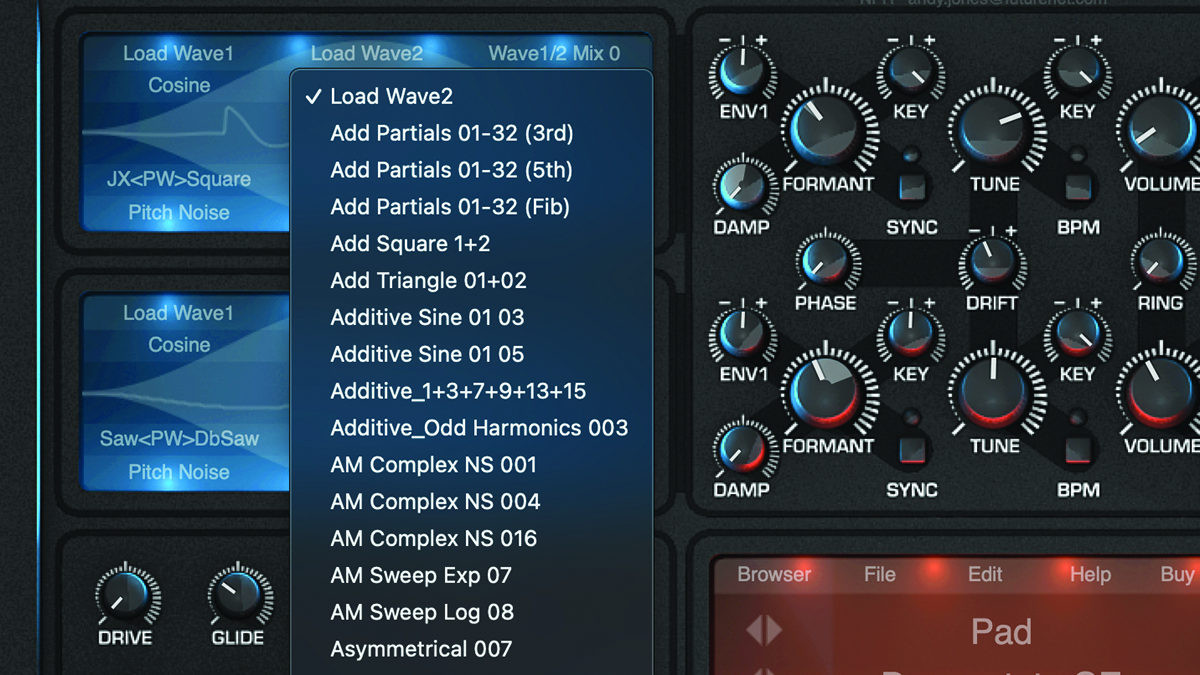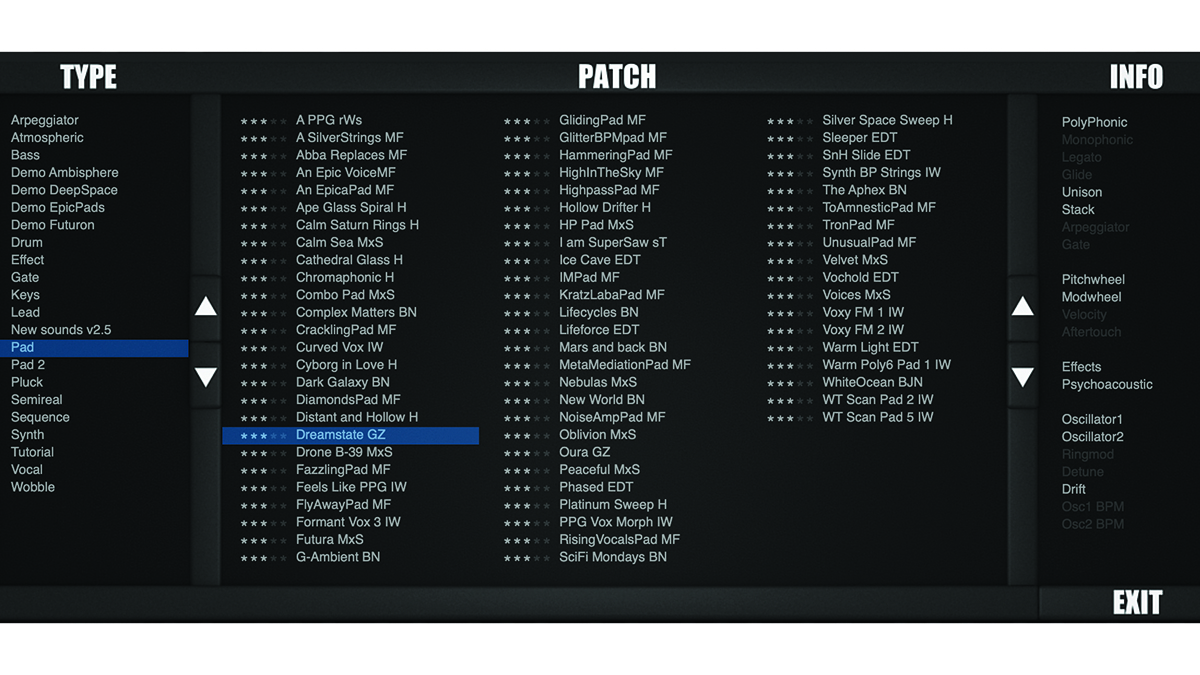MusicRadar Verdict
It might have taken years, but Rayblaster is becoming the synth it promised to be and fulfilling its sonic destiny.
Pros
- +
More exciting new sounds show off the synth’s potential.
- +
Easier than it should be to use.
- +
Lots of mangling options.
- +
Import your own audio.
- +
Great to experiment with.
Cons
- -
IMS is still like black magic.
MusicRadar's got your back
Tone2 Rayblaster 2.9: What is it?
Yes, it’s been a decade since we looked at Rayblaster from Tone2, so it’s about time we revisited this synth to see how it has matured. And it really has upped its game, but before that, we will address why it was revolutionary in the first place before we decide whether it still is…
Impulse Modeling Synthesis (IMS) is what we’re talking about here (more detail about that below). We could be pedantic and add that this isn’t quite the “revolutionary, new synthesis method” Tone2 states, simply as it’s at least 10 years old. However, it still delivers enough intrigue and complex promises to put many newer synthesis methods in the shade.
Essentially it attempts to combine the best of waveshaping, modelling, granular and subtractive, all behind a pleasing and straightforward UI.
Tone2 says the resulting sounds can seem ‘enormously immersive or even completely psychedelic’. Yet one of the criticisms of the original was that its presets didn’t all show this off, many being based on the sounds that were causing a stir at the time – think heavy basses, wobbles etc – and why not?
However, the latest version boasts well over double the number. There’s also a complete stereo architecture, better effects, extra algorithms and modulation options plus more UI size options.

Impulse Modeling Synthesis
According to Tone2, IMS allows you “to create unique signature sounds that are absolutely impossible with other synthesizers”.
However, the actual detail of IMS is a little vague. While it takes elements of a few other synthesis methods, it appears to be more about granular than any other.
Want all the hottest music and gear news, reviews, deals, features and more, direct to your inbox? Sign up here.
It uses short segments of impulse responses, waveforms and even imported files – so can be said to use several other synthesis types as its core ingredients. It then overlaps and blends them into more complex sounds.
The option to import waveforms and synthesise snippets of vocals or drum loops makes it pretty much infinite in terms of possibilities.
And the fact that there is easy syncing with your DAW bpm means that the complex engine delivers relatively understandable results.
So really the best bit about IMS is that you can simply not bother lifting the bonnet on this particular engine as it’s easy enough to just enjoy the ride and create your own sounds.

Tone2 Rayblaster 2.9: Performance and verdict
It might not be conventional synthesis, but like so many before it, IMS is all about taking core ingredients and basically messing with them!

• Spectrasonics Omnisphere
Can basically do pretty much anything, but it has extensive granular (and other!) options.
• Arturia Pigments
Like Rayblaster, this combines many synth engines, drag & drop modulation and an easy UI.
You start with two oscillators and the ability to load two waveforms into each, with a mix control blending between samples or morphing between filter characteristics. The waves are selected from drop-down options and you can load your own in via the File menu.
Doing this is a good place to learn, as you can then explore the mangling options within the two oscillator windows.
We loaded a beat in, for example, brightened it with the Harmonic option, spluttered it with the Cosine menu, added noise and then blended it with the second oscillator.
Frantic and often Aphex Twin-adjacent noise ensued, but you get the picture: there’s a lot to mangle. Add in extra pitch, sync, key, pan and formant options, the latter often quite filter-like, and you have some extraordinary shaping stuff at the source.
Then you can modulate aplenty. Drag and drop options allow you to quickly assign LFOs and other sources, as does a comprehensive Matrix area which allows dozens of sources and destinations to get to know one another.
Here you can also bring in extensive effects, tweak setup parameters and edit arpeggiation settings. It really is all here…
Blasters on fun
The resulting sounds are now far more varied and greater in number than on the original; Tone2 did a lot to resolve those criticisms of the synth sounding a little too EDM and VA.
Sure it opens with arpeggiations straight out of clubland and there’s plenty more of this ilk should you really require it. But Rayblaster’s ‘thing’ is more about exploring the other routes, messing with the supplied waves and your own and applying frankly hundreds of synthesis ideas with relative ease.
It’s now leaning much further into the territory we smugly call Intelligent Dance Music, with mash-ups, detunes, blurred atmospheres, and evocative dreams. Psychedelic too. It’s a blast, man.
MusicRadar verdict: It might have taken years, but Rayblaster is becoming the synth it promised to be and fulfilling its sonic destiny.
Tone2 Rayblaster 2.9: Hands-on demos
MusicGearz
Tone2 Rayblaster 2.9: Specifications
- macOS 10.12 or higher / macOS 11 / macOS 12 / macOS 13. VSTi, Audio Unit (AUi), VST3, Standalone, Universal Binary; Native support for M1 and M2 and Intel.
- Windows 7 / 8 / 10 / 11. 64-bit VSTi, VST3, Standalone.
- CONTACT: Tone2
Andy has been writing about music production and technology for 30 years having started out on Music Technology magazine back in 1992. He has edited the magazines Future Music, Keyboard Review, MusicTech and Computer Music, which he helped launch back in 1998. He owns way too many synthesizers.

